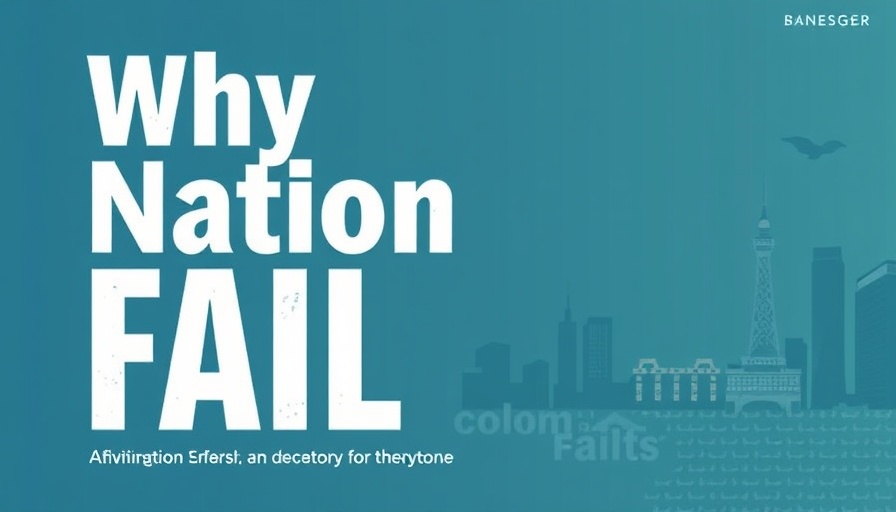
Understanding Extractive vs. Inclusive Institutions
The crux of Daron Acemoglu and James A. Robinson's insightful book, Why Nations Fail: The Origins of Power, Prosperity and Poverty, lies in the distinction between extractive and inclusive institutions. These institutions serve as the backbone of a nation's political and economic systems, profoundly influencing growth and stability.
Extractive institutions are designed to benefit a small elite, concentrating power and resources while stifling the general populace's capabilities. This can often lead to societal unrest and economic decline. The authors emphasize that while cultural and geographical factors contribute to a nation's success, it is the type of institutions that ultimately dictate long-term prosperity. On the contrary, inclusive institutions empower a wide demographic, fostering innovation and facilitating economic growth.
Lessons from Korea and Nogales: Institutions in Action
Acemoglu and Robinson provide compelling examples to illustrate their arguments. The delineation between North and South Korea starkly contrasts the effects of different institutional frameworks. Despite their geographical proximity and shared cultural heritage, North Korea's extractive regime hampers growth and leads to widespread poverty, while South Korea thrives due to its inclusive institutions that champion innovation and individual rights.
Similarly, the cities of Nogales, Arizona, and Nogales, Sonora offer a real-world example of institutional impact. The robust American institutions on the northern side facilitate growth and safety, while the extractive environment of Nogales, Sonora, leads to stagnation and violence. These cases highlight how institutional quality can significantly affect quality of life and economic prospects, underscoring the importance of cultivating inclusive structures.
Strategies for Building Inclusive Institutions in Medical Practices
For owners of concierge medical practices, the principles exhibited in Why Nations Fail resonate powerfully. Establishing inclusive practices can pave the way for long-term success in a competitive landscape. Here are critical strategies to consider:
Empower Your Team: Just as inclusive institutions encourage innovation, involve your staff in decision-making processes. Empowering your team fosters loyalty and creativity, crucial for business growth.
Focus on Patient Engagement: Building strong relationships with patients through transparent communication and tailored services can position your practice as an invaluable resource in the community.
Invest in Sustainable Growth: Explore opportunities for collaborative partnerships that enhance patient care and broaden service offerings, thereby creating a network of inclusive support within the medical ecosystem.
The Necessity of Inclusivity in Governance
Acemoglu and Robinson stress that inclusivity is not merely beneficial; it is essential for stable governance. Extractive practices often spark unrest, highlighting the need for leaders in the medical field to prioritize inclusivity within their operations. By understanding this dynamic, medical practice owners can safeguard not just their businesses but also contribute positively to community health outcomes.
Even in the face of external challenges such as regulatory pressures andhealthcare reforms, adopting a philosophy rooted in inclusivity can help ensure resilience and sustainability. This strategic foresight is crucial, especially as the healthcare landscape continues to evolve.
Conclusion: The Road to Long-Term Success
In conclusion, Daron Acemoglu and James A. Robinson's analyses in Why Nations Fail can provide profound insights for healthcare professionals, particularly those operating concierge practices. Understanding and implementing inclusive principles not only fortifies your practice but also places you as a pivotal player in fostering healthier communities. As you navigate the complexities of healthcare operations, keep in mind the enduring impact of inclusivity on your practice's fortune. Taking decisive action now can lead to thriving medical institutions in the future.
 Add Row
Add Row  Add
Add 




Write A Comment